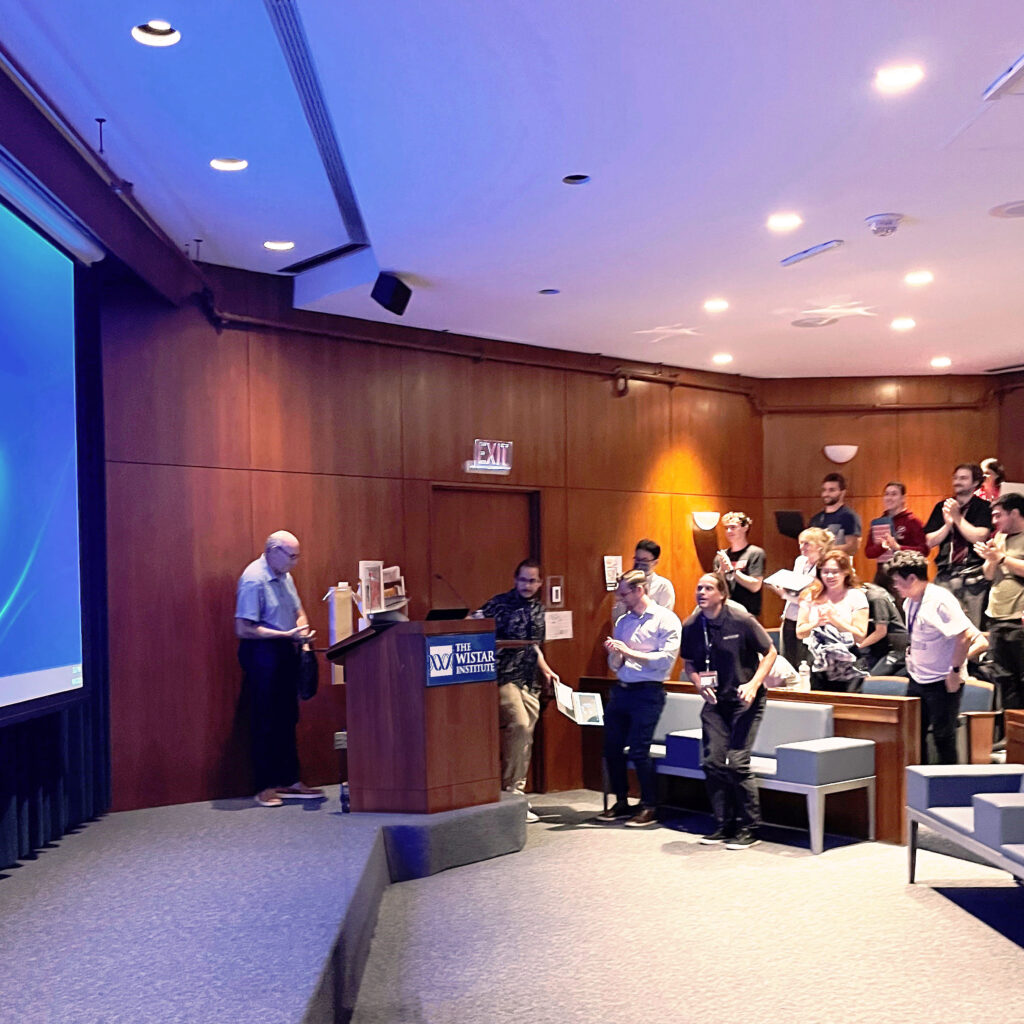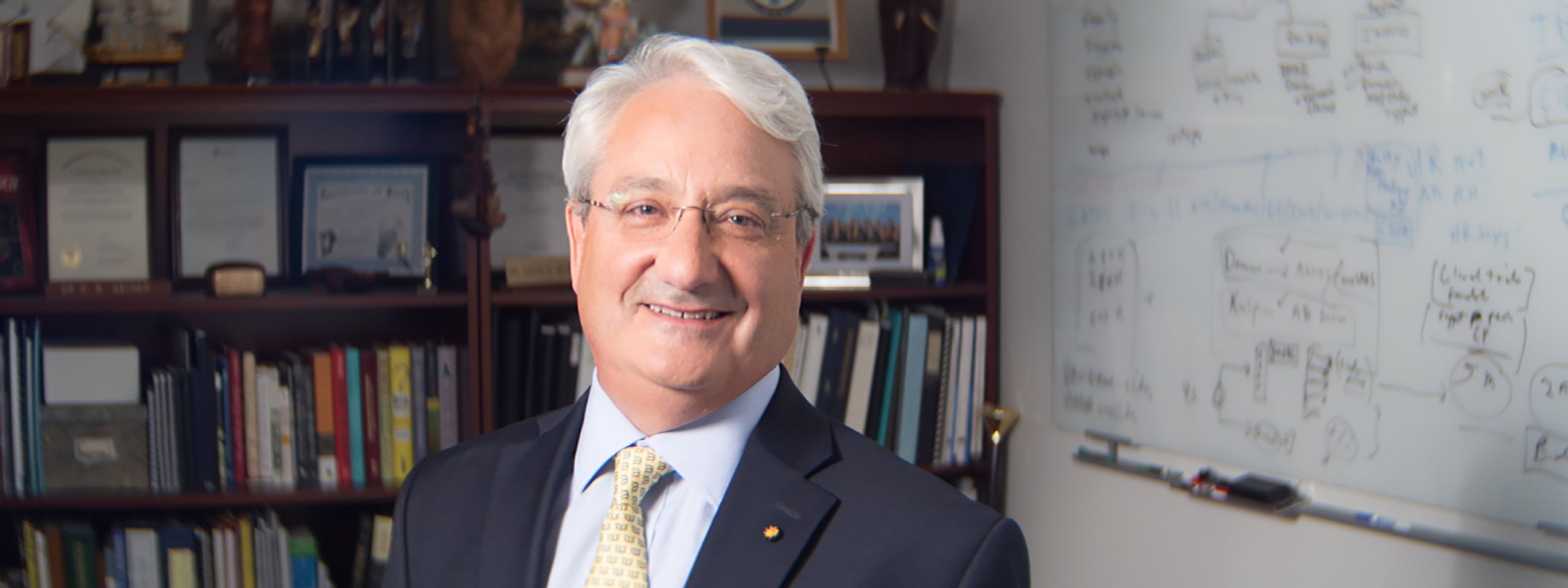Teaching Students How to Create Vaccines: Inside Dr. David Weiner’s Vaccines and Immune Therapeutics Class
Since 1997, Wistar’s Dr. David Weiner has taught Vaccines and Immune Therapeutics for the University of Pennsylvania’s Perelman School of Medicine. After joining The Wistar Institute — where he serves as the Executive Vice President, W.W. Smith Charitable Trust Distinguished Professor in Cancer Research, and Director of the Vaccine & Immunotherapy Center — Dr. Weiner continued leading the class, which features world-class experts from an eminent roster of the best in vaccinology. Dr. Weiner’s 13-week fall-semester course is noted for its pragmatic approach to the science & process of vaccine design, with students hearing from the field’s most trusted experts.
Where did the idea to start this course come from?
Starting the course was a group effort: Paul Offit1, Stanley Plotkin2, Maurice Hilleman3, and myself. Then Emilio Emini4 and Kathrin Jansen5 joined shortly after, right at the beginning; point is, we had very big names.
There was a prevailing mood in the late 80s and early 90s that infectious disease had basically been conquered. Now, take a look around you: that’s obviously not true. But that was in the air at the time, and there weren’t any courses focusing on vaccines as such; all the immunology lectures tended to focus on the immunology theory, and if they wanted to get into the nitty-gritty, they’d talk about how mice respond to vaccines. But not how human immune systems respond to vaccines, which is what’s important for stopping infection in the real world.
At the time, my career had turned from cancer immunotherapy to vaccine technology. As a faculty member, I was building a new program in DNA vaccines, and I was working with all these vaccine people. We realized we had this gap in how we were teaching the students, so we started a course dedicated to how vaccines are actually made: how you design them, how you test them, how humans respond to them, and so on. And it isn’t just the science, although that’s the biggest part. Students learn that designing a vaccine in the lab is one thing, but it’s almost another challenge entirely to put shots in people’s arms — how scientists need to prepare for regulatory and market forces when designing vaccines.
What do the students learn?
Students who enroll should have background on the fundamentals of immunology, so that gives us the opportunity to get into the weeds on vaccine topics. That could be anything from how adjuvants are used in vaccines — which, by the way, are essentially immune irritants that you can put in a vaccine to make it more effective — to the procedural steps involved in actually getting a vaccine to market.
But I think that what’s really made this class special and such a hit for more than two decades is the caliber of the lecturers. We have a Who’s Who in vaccinology talking with our students. They get to learn from Kathrin Jansen, for example — who led the development of Gardasil, the first HPV vaccine — or, before he passed away, Maurice Hilleman, who I think has probably saved more lives than anybody else in history through his work at Merck. Students saw successes and failures throughout the years, like when the license for the rotavirus vaccine was announced or when the clinical trial for one of the first HIV vaccines failed; if you’re enrolled in this course, you’re up close and personal with the field in a way that, unless you already work in it, is unparalleled.

One thing I remind the students of, too, is that their access to the folks we have lecturing is an almost untold privilege; even working scientists may not ever speak with these superstars. Let me put it this way: you’re not talking to Emilio Emini unless you’re from someplace like CNN. And even then, it’s a question of whether he has time to step away from his work with Bill Gates. So when you ask why the course is so popular, I have to point to whom we’ve been able to recruit; our students learn from the best of the best.
If this course were taught in, say, the ‘60s, how would the lectures be different? How has the field evolved?
I think one of the great things about this course in particular is that it really captures the constant shift of technology. Even in the 90s, we were still mostly talking about live attenuated vaccines — the fundamental idea that a weakened pathogen can teach the immune system how to fight the real thing.
There’s nothing wrong with live attenuated vaccines; we don’t see polio anymore thanks to live attenuated vaccine design. But the field has grown so much since then, and our students get to see those advances almost in real time. Sea changes and shifts happen pretty frequently in vaccinology. We’ve seen the rise of adjuvants as vaccine enhancers; there’s been the development of DNA vectors, like the kind my lab works on; and then, of course, you have the mRNA revolution, which happened right before the students’ eyes when the COVID mRNA vaccines were developed at a record pace. Just this year, Drew Weissman6 wins the Nobel Prize on a Monday, and he’s here at Wistar teaching the class that Wednesday — where else do you have that?
This course was only started in ‘97, so I don’t think that any of our students have vaccines to their names yet. But the students who take this course frequently get jobs in academia or industry, and they’re well-prepared because they had the tremendous opportunity to hear first-hand from the most trusted experts in the field.
In terms of total lives saved, I don’t think any technology competes with vaccination. It’s our number one tool for fighting deaths caused by viruses. Making sure that our students can learn from the best and brightest in vaccinology paves the way for a new generation of experts — and many more millions of deaths prevented.
- Paul Offit, M.D., Maurice R. Hilleman Chair of Vaccinology at the Perelman School of Medicine ↩︎
- Stanley Plotkin, M.D., Professor Emeritus, The Wistar Institute ↩︎
- Maurice A. Hilleman, M.D., former Senior Vice President of Merck Research Labs ↩︎
- Emilio Emini, Ph.D., CEO of The Bill and Melinda Gates Medical Research Institute ↩︎
- Kathrin Jensen, Ph.D., former Head of Vaccine Research and Development at Pfizer ↩︎
- Drew Weissman, M.D., Ph.D., Roberts Family Professor in Vaccine Research at the Perelman School of Medicine and 2023 Nobel Laureate ↩︎
